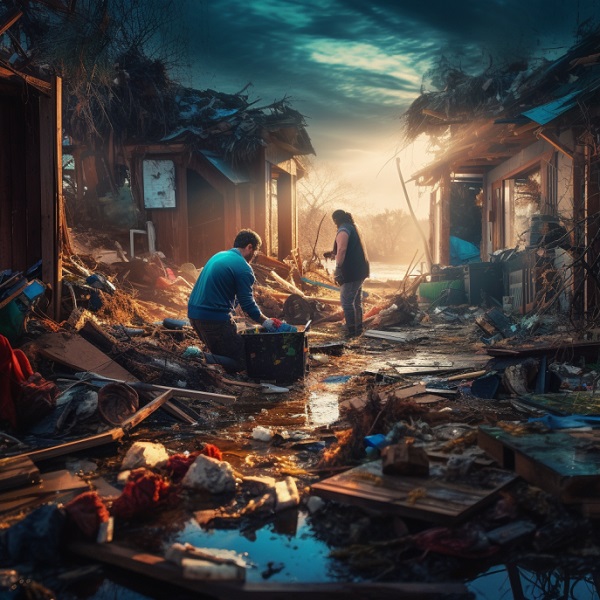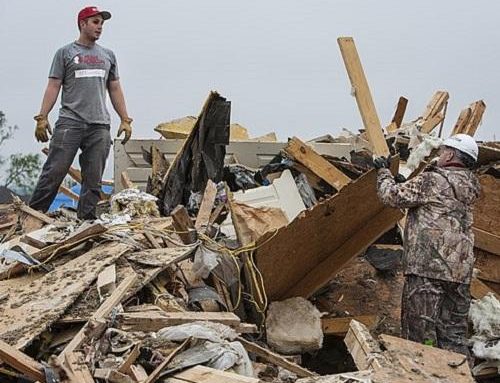Alright, folks, gather ’round. It’s time for us to have a heart-to-heart about the not-so-glamorous side of clean-up work, especially when it’s got to do with flooding. Let’s not sugarcoat this – it’s hazardous, but hey, knowing the ropes can make a world of difference. So, let’s get down to the nitty-gritty.
Health Tips
First off, we’re talking health tips:
- When it comes to lifting those hefty water-logged items, don’t be a hero. Take breaks, use good form, and remember – there’s strength in numbers. If something weighs more than 50 pounds per person, grab a buddy or use a machine to lend a hand.
- If you’re toiling under the sun, remember to stay hydrated, slap on that sunscreen, and take breaks. Loose, light-colored clothing is your friend.
- Keep a first-aid kit handy for any cuts or scrapes. If you’ve got an open wound, protect it with waterproof gear.
- Lastly, don’t forget to wash those mitts often, especially before chowing down or touching up your mug with cosmetics.
General Precautions
Now, let’s talk general precautions:
- Before you wade into a flooded area, use a wooden stick or pole to test the waters – literally. Look out for holes, pits, and things sticking out.
- Make sure your ladders and scaffolds are secure before you start your ascent.
- Don’t rush into a flooded or flood-damaged building. Have it checked and given the green light by a registered professional first.
- If you come across washouts, trenches, or gullies, make sure they’re stable or properly supported before you step in.
- Have a plan in place to get in touch with medical personnel just in case things go south.
- Report any obvious hazards like downed power lines, frayed wires, gas leaks, or any rogue wildlife to the folks who can handle it.
- Use fuel-powered generators outside – they might keep the lights on, but indoors, they’re a carbon monoxide hazard.
- If there’s a chance of deep water exposure, don your life vests.
- Treat containers of unknown or toxic substances with caution. If you need to dispose of them, get in touch with the EPA’s National Response Center.
- And whatever you do, don’t use improvised surfaces like fridge racks to cook or boil water. You don’t want a side of heavy metals with your meal.
PPE
Alright, let’s talk gear. Always suit up with watertight boots (steel toe and insole, folks), gloves, long pants, and safety glasses. Sneakers won’t cut it here. If there’s a risk of falling debris, a hardhat is your best friend. If you’re dealing with moldy materials or vegetation, a NIOSH-approved dust respirator is a must. And when using chemicals like bleach, protect your eyes, hands, and face, and keep plenty of clean water nearby.
Electrical Hazards
Now, onto electrical hazards. Folks, please don’t touch downed power lines or anything they could be in contact with. Treat all power lines as live until proven otherwise. Be extra careful around overhead and underground lines when clearing debris. If you suspect any damage to the electrical system, shut it off and get it checked out by a pro before starting any work. When using a generator, make sure the main circuit breaker is OFF to prevent any inadvertent backflow of electricity. And remember, de-energized lines can become live again if there’s a secondary power source, like a portable generator. All electrical equipment used in wet environments should be marked for such use and kept in good condition. Keep connections out of water, and make sure all cord-connected tools are grounded or double
Fire Hazards
Lastly, let’s talk about fire. If you smell gas, evacuate and ventilate the area immediately. It’s crucial to control any gas leaks as they can lead to dangerous fires and explosions. Be sure to have an adequate number of fire extinguishers available and re-evaluate your fire evacuation plan regularly to ensure it’s still suitable for your current situation. Additionally, all fire exits should be clear of debris and sandbags to facilitate quick and safe evacuation in case of a fire.
Conclusion
After a flood, fires can be more common due to damaged electrical systems or flammable materials being disturbed. Therefore, always take appropriate precautions when dealing with potential fire hazards in flood cleanup operations. Remember, safety is paramount in these situations. It’s not just about cleaning up, but doing so in a way that ensures your health and safety in the process.










